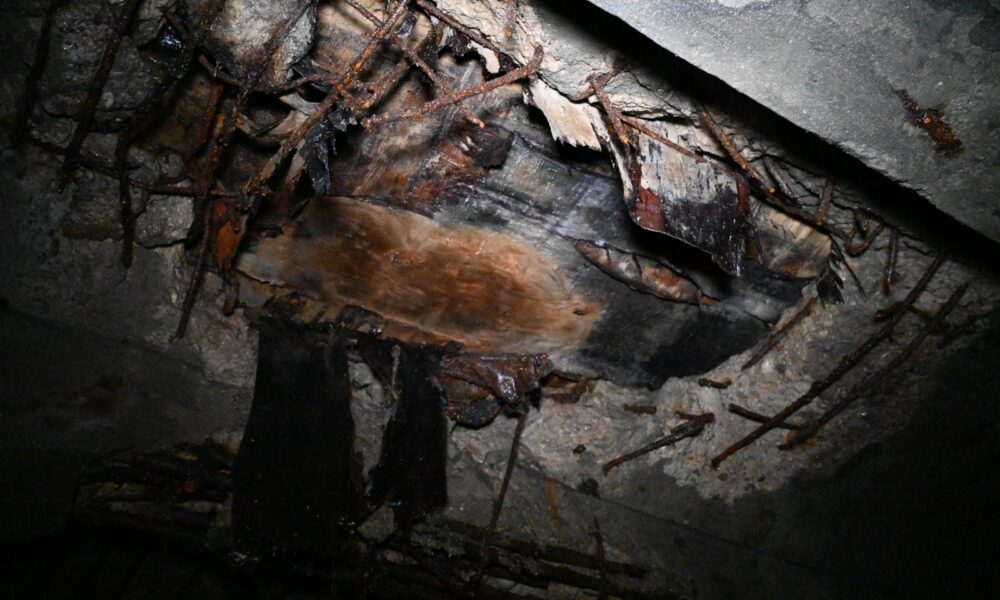Evraz appreciated steel consumption in infrastructure construction

According to the results of the first quarter, the share of active projects of steel infrastructure construction amounted to 79.1%, which became a minimum since 2023. The number of frozen projects, which reached a two -year maximum, is growing in this segment of construction. The steel companies last year hoped that, against the backdrop of the crisis in housing construction, it is infrastructure that would support stagnant demand in the domestic market, but the data show that in this segment steel consumption also does not grow.
Evraz Steel prepared the calculation of the health factor of the industry (LCD) of steel construction, taking into account the volume of consumption of steel construction rental in infrastructure and industrial construction (“Kommersant” got acquainted with the document). According to this calculation, according to the results of the first quarter, the share of active projects of steel infrastructure construction was 79.1%. The last time below 80% this figure was in 2023. Also, according to the results of March, the maximum value of inactive, that is, frozen, infrastructure construction projects – 288 units were recorded in two years. A year ago, there were 100 less such projects. According to the KZO, the volume of frozen metal rolling (purchased, but not used on the project for which it was purchased) and a steel lifter is growing.
So, the share of “inactive” steel structures in this quarter amounted to the maximum 20–22%maximum since 2023, while a year ago it did not exceed 16%.
According to the NKR, the current volume of steel consumption in infrastructure construction is about 7-8 million tons. Most of all, the transport infrastructure (railways, bridges, tunnels and accompanying infrastructure), then industrial infrastructure (warehouses, production facilities) and energy facilities (power lines, power plants) are consumed, the director of the NKR agency Alexander Divakov lists.
Steel companies during 2024 have repeatedly expressed in favor of the fact that it is infrastructure construction that can support stagnant demand in the domestic market, especially against the background of turning popular mortgage programs and, as a result, mass multi -apartment building (See “Kommersant” dated December 5, 2024). However, the data of the KZO show that in infrastructure construction steel consumption also does not grow.
Evraz notes a significant decrease in orders in the segment of road transport infrastructure-for example, three times on bridges.
The industrial mortgage has not yet found a response in the market in a significant volume, and for a large industrial segment, the availability of credit funds remains an important factor, the company said. “But we see that projects that have received preferential financing from state -owned banks or development institutions continue to actively be built and create a demand for steel,” says Dmitry Yeremeyev, the development director of Evraz. “Therefore, the market will positively perceive any measures of state support that will allow attracting accessible funding.” According to the director of the practice of engineering of the NEO consulting company Yana Lebedinskaya, steel consumption in infrastructure construction could subsidize interest rates on loans for developers, manufacturers of metal structures and suppliers of steel rental, direct state investment in the modernization of new steel production and development technologies scrap (See “Kommersant” from April 18), as well as tax benefits for infrastructure projects using steel, steel rental manufacturers and enterprises that introduce energy -efficient technologies in the steel industry.
It is also necessary to subsidize logistics, continues Oleg Ablev, the head of the analytical department of the RIKO-TRAST investment company: “Metal must still be taken to the construction object, and this is quite expensive.” But state funding can be a solution only for a very limited pool of projects, the chief analyst of Sherpa Group Alexei Zhundrikov fears, the rest must reduce the key rate. In addition, problems can occur due to state financing delays or large warehouse residues, adds Oleg Abel.
Anton AlikhanovHead of the Ministry of Industry and Trade of the Russian Federation, July 21, 2024 at the launch ceremony of metallurgical production:
“In the domestic market, the state continues to systematically form a capacious demand for metal products due to the implementation of large -scale infrastructure construction projects.”
In 2025, stagnation or moderate decrease in steel consumption by infrastructure due to general economic factors and insufficient investment demand is most likely, Yana Lebedinskaya admits. However, in the first quarter there was a surge in federal expenses for the implementation of new infrastructure national projects (“Infrastructure for Life”, “Effective Transport System”), they sent almost one and a half times more funds than to the predecessor projects, adds Alexei Zhundrikov. Probably, the projects “have not yet reached the stage when they already need steel,” are allowed by market participants, who have not yet felt their positive influence.
This is the illusion that infrastructure construction is less affected by the key rate due to the high role of state financing, says Natalya Churkina, an analyst at the Institute of Complex Strategic Research. “For example, according to the Ministry of Transport, almost half the amount of financing of national projects“ Effective Transport System ”and“ Infrastructure for Life ”in the field of transport is laid on extrabudgetary sources,” she explains. “A large number of contractors work on infrastructure projects for which reducing the availability of credit resources can lead to high risks in the implementation of long -term state contracts.”






